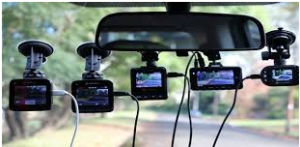How Tech Is Transforming the Global Job Market
Technology has always played a role in shaping the economy, but in recent years, its impact on the global job market has been nothing short of revolutionary. From automation and artificial intelligence to remote work platforms and gig economy apps, technology is redefining how people work, the skills employers demand, and the opportunities available across industries. This transformation presents both exciting possibilities and pressing challenges for workers worldwide.
Automation and the Shift in Job Roles
Automation is one of the most significant forces transforming employment. Tasks that were once handled manually, such as data entry, inventory management, and even parts of customer service, are increasingly performed by machines or software. While automation may reduce the number of traditional jobs in some industries, it also creates new roles that focus on monitoring, maintaining, and improving these technologies. For workers, the key challenge is reskilling to stay relevant in an automated workplace.
Artificial Intelligence and New Career Paths
Artificial intelligence (AI) is not only reshaping existing jobs but also giving rise to entirely new career paths. AI is now used in fields ranging from healthcare diagnostics to financial analysis and marketing personalization. As companies embrace AI, demand for specialists such as data scientists, machine learning engineers, and AI ethicists is growing rapidly. This highlights how technology is not just replacing jobs but also driving innovation in new professions.
Remote Work and Global Talent Pools
The rise of digital platforms and collaboration tools has broken geographical barriers in the job market. Remote work, accelerated by the COVID-19 pandemic, is now a standard option for many companies. This shift has created opportunities for workers in developing countries to access jobs in global markets, while also allowing businesses to tap into a wider pool of talent. The ability to work across borders is one of the most visible ways technology is changing employment opportunities worldwide.
The Gig Economy and Flexible Employment

Technology has fueled the growth of the gig economy, where workers take on short-term, flexible jobs through digital platforms. Apps like Uber, Upwork, and Fiverr have enabled millions of people to earn income on their own terms. While gig work offers flexibility and independence, it also raises concerns about job security, benefits, and long-term financial stability. Governments and businesses are still grappling with how to balance flexibility with protection for gig workers.
Upskilling and Lifelong Learning
With rapid changes in technology, continuous learning has become essential. Traditional education alone is no longer enough to sustain a lifelong career. Online learning platforms, coding bootcamps, and corporate training programs are helping workers adapt to evolving job demands. Skills such as data literacy, cybersecurity, and digital communication are increasingly sought after, showing how tech-driven learning is central to future career growth.
Challenges of Inequality and Access
Despite the benefits, the technological transformation of the job market is not without challenges. Workers in regions with limited internet access or digital infrastructure risk being left behind. Similarly, employees without opportunities for upskilling may find themselves displaced by automation. Bridging the digital divide will be crucial to ensuring that the benefits of technology are shared more equitably across societies.
Technology is reshaping the global job market at an unprecedented pace. Automation and AI are creating new career paths, remote work is breaking down borders, and the gig economy is redefining flexibility. However, these changes also bring challenges related to inequality, job security, and the need for constant upskilling. For individuals and businesses alike, embracing lifelong learning and adapting to technological advances will be the key to thriving in the evolving world of work.…
Read More









 One of the most compelling reasons to invest in editing software before buying YouTube subscribers is the ability to achieve professional video quality. While raw footage may have its charms, a well-edited video can captivate audiences and leave a lasting impression. With editing software, you can access various tools and features that enhance your videos, from adjusting colors and lighting to adding transitions and special effects. Editing software also lets you trim and cut unnecessary parts, ensuring your content remains concise and engaging. Moreover, it allows for seamless audio integration, eliminating background noise or enhancing sound quality. These small details can make a difference in creating a polished final product.
One of the most compelling reasons to invest in editing software before buying YouTube subscribers is the ability to achieve professional video quality. While raw footage may have its charms, a well-edited video can captivate audiences and leave a lasting impression. With editing software, you can access various tools and features that enhance your videos, from adjusting colors and lighting to adding transitions and special effects. Editing software also lets you trim and cut unnecessary parts, ensuring your content remains concise and engaging. Moreover, it allows for seamless audio integration, eliminating background noise or enhancing sound quality. These small details can make a difference in creating a polished final product. Investing in editing software is not just a short-term fix for your YouTube
Investing in editing software is not just a short-term fix for your YouTube 
 Security should always be a top priority when it comes to using any app or online platform, and TikTok is no exception. With millions of users worldwide, the developers behind TikTok are constantly working to ensure the safety and protection of its user base. That’s where security patches come into play. Updating your TikTok app regularly allows you to avoid potential vulnerabilities and protect your personal information from falling into the wrong hands. Security patches are updates that address any known security issues within the app. By installing these patches, you’re fortifying your account against hackers or malicious actors who may try to exploit weaknesses in older app versions.
Security should always be a top priority when it comes to using any app or online platform, and TikTok is no exception. With millions of users worldwide, the developers behind TikTok are constantly working to ensure the safety and protection of its user base. That’s where security patches come into play. Updating your TikTok app regularly allows you to avoid potential vulnerabilities and protect your personal information from falling into the wrong hands. Security patches are updates that address any known security issues within the app. By installing these patches, you’re fortifying your account against hackers or malicious actors who may try to exploit weaknesses in older app versions.
 The user experience is vital in determining its success when using any app. With each update, developers strive to enhance the overall user experience and make it more enjoyable. Updating your app before buying TikTok followers is crucial as it allows you to access these improved user experiences. These updates often include bug fixes, performance optimizations, and UI enhancements that can significantly improve how you interact with the app. One of the common issues users face while using older versions of an app is slow loading times or crashes. Updating your app ensures that these issues are addressed and resolved, providing a smoother and seamless browsing experience.
The user experience is vital in determining its success when using any app. With each update, developers strive to enhance the overall user experience and make it more enjoyable. Updating your app before buying TikTok followers is crucial as it allows you to access these improved user experiences. These updates often include bug fixes, performance optimizations, and UI enhancements that can significantly improve how you interact with the app. One of the common issues users face while using older versions of an app is slow loading times or crashes. Updating your app ensures that these issues are addressed and resolved, providing a smoother and seamless browsing experience.
 A smart home system is a network of devices and appliances connected and controlled through the internet, creating an intelligent ecosystem within your home. It allows you to remotely control and monitor various aspects of your living space, such as lighting, heating, security systems, entertainment systems, and even kitchen appliances. At the heart of a smart home system lies a central hub or controller that serves as the command center for all connected devices. This hub acts as the brain behind the operation, receiving and processing information from sensors placed throughout your home. In essence, ‘smart’ refers not only to increased convenience but also to enhanced safety measures.
A smart home system is a network of devices and appliances connected and controlled through the internet, creating an intelligent ecosystem within your home. It allows you to remotely control and monitor various aspects of your living space, such as lighting, heating, security systems, entertainment systems, and even kitchen appliances. At the heart of a smart home system lies a central hub or controller that serves as the command center for all connected devices. This hub acts as the brain behind the operation, receiving and processing information from sensors placed throughout your home. In essence, ‘smart’ refers not only to increased convenience but also to enhanced safety measures. Smart home systems have significantly changed the way we interact with our homes. But how exactly do these systems work? Let’s take a closer look. At the heart of every smart home system is connectivity. These systems rely on various wireless technologies, such as Wi-Fi or Bluetooth, to connect devices within your home. From smart thermostats to security cameras and even kitchen appliances, all these devices can communicate with each other through a centralized hub or control panel. Most smart home systems use protocols like Zigbee or Z-Wave to make this communication possible. These protocols provide a common language that allows gadgets from different manufacturers to work together.
Smart home systems have significantly changed the way we interact with our homes. But how exactly do these systems work? Let’s take a closer look. At the heart of every smart home system is connectivity. These systems rely on various wireless technologies, such as Wi-Fi or Bluetooth, to connect devices within your home. From smart thermostats to security cameras and even kitchen appliances, all these devices can communicate with each other through a centralized hub or control panel. Most smart home systems use protocols like Zigbee or Z-Wave to make this communication possible. These protocols provide a common language that allows gadgets from different manufacturers to work together.


 One way technology can help us communicate more securely is by encrypting our messages. When messages are encrypted, they can only be read by the person with the key to decrypt them. It means that even if someone were to intercept our message, they would not be able to read it. There are several ways to encrypt messages, but one of the most popular is Pretty Good Privacy (PGP). PGP uses a combination of public-key and symmetric-key cryptography to encrypt and decrypt messages. It is widely used by individuals and organizations who need to communicate securely.
One way technology can help us communicate more securely is by encrypting our messages. When messages are encrypted, they can only be read by the person with the key to decrypt them. It means that even if someone were to intercept our message, they would not be able to read it. There are several ways to encrypt messages, but one of the most popular is Pretty Good Privacy (PGP). PGP uses a combination of public-key and symmetric-key cryptography to encrypt and decrypt messages. It is widely used by individuals and organizations who need to communicate securely. A virtual private network (VPN) is another way to use technology to communicate more securely. VPNs are used to create a secure connection between two or more devices. This connection is usually created over the internet but can also be created over other networks. Businesses often use VPNs to allow employees to connect to the company network outside the office. It can be useful for employees who need to work remotely.
A virtual private network (VPN) is another way to use technology to communicate more securely. VPNs are used to create a secure connection between two or more devices. This connection is usually created over the internet but can also be created over other networks. Businesses often use VPNs to allow employees to connect to the company network outside the office. It can be useful for employees who need to work remotely. Technology offers many ways to help us communicate more securely. Using message encryption, secure communication protocols, virtual private networks, and secure messaging apps ensure our communications are safe from interception and eavesdropping.
Technology offers many ways to help us communicate more securely. Using message encryption, secure communication protocols, virtual private networks, and secure messaging apps ensure our communications are safe from interception and eavesdropping.
 One of the main factors that make using Google online fax ideal is that it is easy to use. Unfortunately, many are wrongfully made to believe that Google fax is complex mainly because it is a new concept. It is crucial to note that it will only take you a few minutes to master Google.
One of the main factors that make using Google online fax ideal is that it is easy to use. Unfortunately, many are wrongfully made to believe that Google fax is complex mainly because it is a new concept. It is crucial to note that it will only take you a few minutes to master Google. The last reason why you should consider using Google online fax is that it is cheaper. Most enterprises want to save money to increase their profits. One way of doing that is cutting down the operational costs; this can be archived by using Google online fax. In addition, you will not have to buy fax machines, toners or papers; everything can be done through the internet.
The last reason why you should consider using Google online fax is that it is cheaper. Most enterprises want to save money to increase their profits. One way of doing that is cutting down the operational costs; this can be archived by using Google online fax. In addition, you will not have to buy fax machines, toners or papers; everything can be done through the internet.





 theory. When you are learning any new discipline, it is crucial that you familiarize yourself with its foundational ideologies first. Any well-designed website adheres to UX design rules. With a good website, visitors will want to stay and revisit the site. Therefore, it is crucial that you understand all rules and procedures before developing any website.
theory. When you are learning any new discipline, it is crucial that you familiarize yourself with its foundational ideologies first. Any well-designed website adheres to UX design rules. With a good website, visitors will want to stay and revisit the site. Therefore, it is crucial that you understand all rules and procedures before developing any website. must be able to do more than just design. When developing a website, you must structure it in a way that it is user-friendly as well as appear in search engine bots. SEO (Search Engine Optimization) helps in optimizing a site to improve its online visibility. Therefore, a good web designer should learn SEO rules to help increase site rankings through search engines. Focusing on SEO helps improve a site’s performance; hence, one should ensure they create relevant and valuable content to target the right audience.…
must be able to do more than just design. When developing a website, you must structure it in a way that it is user-friendly as well as appear in search engine bots. SEO (Search Engine Optimization) helps in optimizing a site to improve its online visibility. Therefore, a good web designer should learn SEO rules to help increase site rankings through search engines. Focusing on SEO helps improve a site’s performance; hence, one should ensure they create relevant and valuable content to target the right audience.…




 When you are looking for a CBD oil, one of the best things you need to do is conduct research. When you are conducting your research, there is a lot of valuable information you need to collect. While gathering crucial information, you will end up understanding the best factors you should consider when shopping.
When you are looking for a CBD oil, one of the best things you need to do is conduct research. When you are conducting your research, there is a lot of valuable information you need to collect. While gathering crucial information, you will end up understanding the best factors you should consider when shopping.






 Since a fax machine is only connected to telephone lines, it’s difficult for you to connect your fax machine to the internet. For you to succeed on how to fax a pdf online, you will need to establish some sort of gateway that will be able to accept the documents through the internet and transmit them to a fax machine.
Since a fax machine is only connected to telephone lines, it’s difficult for you to connect your fax machine to the internet. For you to succeed on how to fax a pdf online, you will need to establish some sort of gateway that will be able to accept the documents through the internet and transmit them to a fax machine. You can also receive faxes with these online fax services. However, you will have to sign up for an account with these online fax services. Most of them have paid membership. Once you sign up, you will be given a dedicated phone number that you can use as your fax line.…
You can also receive faxes with these online fax services. However, you will have to sign up for an account with these online fax services. Most of them have paid membership. Once you sign up, you will be given a dedicated phone number that you can use as your fax line.…
 With the conventional ways of sending and receiving faxes, sometimes it was a challenge to trace fax that was sent to you. You would waste a lot of time looking through to see if you will find the exact document you are looking for. However, with google fax services, you will be in a position to trace your faxes easily and quickly. This is because of the google fax number that you are given, and it will help you create a Gmail account. Therefore, once you receive any fax, the information will be notified on the google account. This means you will easily get sent and received faxes by using the Gmail account.
With the conventional ways of sending and receiving faxes, sometimes it was a challenge to trace fax that was sent to you. You would waste a lot of time looking through to see if you will find the exact document you are looking for. However, with google fax services, you will be in a position to trace your faxes easily and quickly. This is because of the google fax number that you are given, and it will help you create a Gmail account. Therefore, once you receive any fax, the information will be notified on the google account. This means you will easily get sent and received faxes by using the Gmail account. In the past, sending and receiving faxes entirely was dependent on bid fax machines and loading of papers. Similarly, you were forced to wait for long hours before you could get the fax that was sent to you. But with google fax services, you can get our fax in a few minutes. The google fax services have allowed individuals using the services to send and receive faxes within a short time. You will not need a confirmation number before you can access the fax sent to you.
In the past, sending and receiving faxes entirely was dependent on bid fax machines and loading of papers. Similarly, you were forced to wait for long hours before you could get the fax that was sent to you. But with google fax services, you can get our fax in a few minutes. The google fax services have allowed individuals using the services to send and receive faxes within a short time. You will not need a confirmation number before you can access the fax sent to you.
 Choosing the best firm out of a billion possibilities is as daunting as putting a man on the nearest solar planetary system by the end of the year. An efficient way of this problem is to make your “IT services Calgary” search and then pick the best ten firms on first five or so pages of your preferred search engine. As you do this, be on the lookout for the IT firms that provide the following services:
Choosing the best firm out of a billion possibilities is as daunting as putting a man on the nearest solar planetary system by the end of the year. An efficient way of this problem is to make your “IT services Calgary” search and then pick the best ten firms on first five or so pages of your preferred search engine. As you do this, be on the lookout for the IT firms that provide the following services: Your company is as good as the data that backs up its operations. Since a medium enterprise or even an individual can have thousands of important files to store and retrieve at convenience, it’s commendable to have a reliable storage unit. Cloud server administration is subsequently an essential service that you can obtain from an affordable IT entity.
Your company is as good as the data that backs up its operations. Since a medium enterprise or even an individual can have thousands of important files to store and retrieve at convenience, it’s commendable to have a reliable storage unit. Cloud server administration is subsequently an essential service that you can obtain from an affordable IT entity.
 The size and weight of crossbows are an example of the most important factors to consider when buying a new tool. Consider the size and weight when looking for a suitable crossbow. You need to be certain of the weapon size so that you are capable of finding a crossbow that is going to suit your requirements. The size determines other variables like the weight and length. Crossbows also have got a unique intricacy whereby the bow becomes more tippy on the front since the bow is a bit far from the stock. The size of the scope that you are also buying can break it down.
The size and weight of crossbows are an example of the most important factors to consider when buying a new tool. Consider the size and weight when looking for a suitable crossbow. You need to be certain of the weapon size so that you are capable of finding a crossbow that is going to suit your requirements. The size determines other variables like the weight and length. Crossbows also have got a unique intricacy whereby the bow becomes more tippy on the front since the bow is a bit far from the stock. The size of the scope that you are also buying can break it down. Another major thing to put into consideration is the reviews from the previous buyers. A device with more positive reviews will always hint you that it is indeed a great tool. Make sure you visit online markets and have a look at some of the reviews on various crossbow products. See whatever other customers say about various crossbow products that accessible on the market. By this, you are going to narrow down your desirable options and find the most comprehensive crossbow to purchase.…
Another major thing to put into consideration is the reviews from the previous buyers. A device with more positive reviews will always hint you that it is indeed a great tool. Make sure you visit online markets and have a look at some of the reviews on various crossbow products. See whatever other customers say about various crossbow products that accessible on the market. By this, you are going to narrow down your desirable options and find the most comprehensive crossbow to purchase.…
 If you want to succeed in your online business, make sure that you have this type of a page. This means that you need to know some of the requirements you should have before you start building this kind of a page. However, it is advisable to be creative and precise. Therefore, consider the graphics you use and provide accurate information that will attract most customers to your page.
If you want to succeed in your online business, make sure that you have this type of a page. This means that you need to know some of the requirements you should have before you start building this kind of a page. However, it is advisable to be creative and precise. Therefore, consider the graphics you use and provide accurate information that will attract most customers to your page.

 customers. It is essential for companies to be able to interact with their clients fast and clearly. Businesses that have websites allow clients to interact with them and get to know about the company and the products or services they provide. Through the FAQ – frequently asked questions page customers can get questions answered. The option of sending questions or having interactive chat sessions with the company is also a great way to engage the customers. This will have great benefits in better communication and create a good public image.
customers. It is essential for companies to be able to interact with their clients fast and clearly. Businesses that have websites allow clients to interact with them and get to know about the company and the products or services they provide. Through the FAQ – frequently asked questions page customers can get questions answered. The option of sending questions or having interactive chat sessions with the company is also a great way to engage the customers. This will have great benefits in better communication and create a good public image. The use of technology allows companies to be linked to the world. It enables businesses to have a wider reach to the global market and visible. The employment of innovations in the banking sector, customer care, resource management, payment, asset management and other areas of the business world makes the need and use of technology critical.…
The use of technology allows companies to be linked to the world. It enables businesses to have a wider reach to the global market and visible. The employment of innovations in the banking sector, customer care, resource management, payment, asset management and other areas of the business world makes the need and use of technology critical.…
 guaranteed starting capital, from banks to online lenders. However, you can use that little money you have to generate more income and start up the kind of investment you aspire to run. There are useful online platforms you can capitalize. The 7 figure cycle is one of those platforms where you will get to learn how to leverage online selling sites using less money and get to earn more profits in the space of two weeks.
guaranteed starting capital, from banks to online lenders. However, you can use that little money you have to generate more income and start up the kind of investment you aspire to run. There are useful online platforms you can capitalize. The 7 figure cycle is one of those platforms where you will get to learn how to leverage online selling sites using less money and get to earn more profits in the space of two weeks.

 ou should start narrowing your list. For instance, if you want to spend less than $200, you will need to consider purchasing GPS units. However, at this given price, there are not many units you can choose. However, you can beat the game with a basic GPS rangefinder. On the other hand, smartphone apps are affordably priced and come with lots of features.
ou should start narrowing your list. For instance, if you want to spend less than $200, you will need to consider purchasing GPS units. However, at this given price, there are not many units you can choose. However, you can beat the game with a basic GPS rangefinder. On the other hand, smartphone apps are affordably priced and come with lots of features.

 As the name suggests, email fax is a type of communication that gives you a chance to send and receive your messages through your emails. In other words, you do need the presence of a fax machine for you to send your faxes. There are not many things that are needed to make this a reality. All that you need is a computer and a stable internet. Also, you do need to be a computer expert so as to make this happen. You only need to have basic computer skills, and you will be good to go.
As the name suggests, email fax is a type of communication that gives you a chance to send and receive your messages through your emails. In other words, you do need the presence of a fax machine for you to send your faxes. There are not many things that are needed to make this a reality. All that you need is a computer and a stable internet. Also, you do need to be a computer expert so as to make this happen. You only need to have basic computer skills, and you will be good to go. Those people who are technophobic will always tend to ask this question whenever they hear anything that has to do with technology. The truth is that are no technicalities that involved in the entire process of sending a fax by use of Gmail fax. It is a simple task that can be done with anyone. With all these facts, you will agree with me that this is a mean of communication that is there to solve most of the communication problems that we have.…
Those people who are technophobic will always tend to ask this question whenever they hear anything that has to do with technology. The truth is that are no technicalities that involved in the entire process of sending a fax by use of Gmail fax. It is a simple task that can be done with anyone. With all these facts, you will agree with me that this is a mean of communication that is there to solve most of the communication problems that we have.…
 When you are planning to purchase a gaming motherboard, this is one of the essential things you are recommended to know. This is because the type of your CPU will determine the kind of a gaming motherboard to use. Also, you can seek advice if you are facing some challenges in identifying your CPU.
When you are planning to purchase a gaming motherboard, this is one of the essential things you are recommended to know. This is because the type of your CPU will determine the kind of a gaming motherboard to use. Also, you can seek advice if you are facing some challenges in identifying your CPU.







 Since the year is still fresh and resolutions are still looking to be achieved. Some have to do with the line of career while others have to do with family and all other spheres of life. In our case, it all has to do with the web hosting craze, upon which the progress of most companies and organizations are based. The best web hosting services are determined by the line of career upon which you are stationed. If your day job revolves around the use of the Internet to facilitate your assignments, then you can comfortably rate the web hosts with which you work.
Since the year is still fresh and resolutions are still looking to be achieved. Some have to do with the line of career while others have to do with family and all other spheres of life. In our case, it all has to do with the web hosting craze, upon which the progress of most companies and organizations are based. The best web hosting services are determined by the line of career upon which you are stationed. If your day job revolves around the use of the Internet to facilitate your assignments, then you can comfortably rate the web hosts with which you work. It would be advisable to try out one of the web hosts that have been ranked among the top ten. Try it out for at least one month as you make keen observations on its good and down side. This way, you will have reached a viable conclusion at the end of the month, and you will know whether to settle for that particular website or move on to the next one.…
It would be advisable to try out one of the web hosts that have been ranked among the top ten. Try it out for at least one month as you make keen observations on its good and down side. This way, you will have reached a viable conclusion at the end of the month, and you will know whether to settle for that particular website or move on to the next one.…
 This one is as simple as it gets. Word of mouth is almost always reliable. However, it is not always available. If you know people who have had problems with their PCs in the past, and have used the services of various PC repair shops, make sure to ask them about their impressions and experiences.
This one is as simple as it gets. Word of mouth is almost always reliable. However, it is not always available. If you know people who have had problems with their PCs in the past, and have used the services of various PC repair shops, make sure to ask them about their impressions and experiences. There are also some other features that separate good shops from bad, and great shops from good ones. The first is turnaround time. Even though PC repairs can take some time, no one is willing to wait for months to get their PCs repaired. No repair should last for more than a few hours, or day or two, at max. Next up, pay attention to the warranty. A great shop will offer between 60 and 90 days of warranty; a bad one will not offer a single day. Lastly, check the pricings and whether a shop charges flat rates or by the hour. Either way, do some math and make sure it fits into your budget.…
There are also some other features that separate good shops from bad, and great shops from good ones. The first is turnaround time. Even though PC repairs can take some time, no one is willing to wait for months to get their PCs repaired. No repair should last for more than a few hours, or day or two, at max. Next up, pay attention to the warranty. A great shop will offer between 60 and 90 days of warranty; a bad one will not offer a single day. Lastly, check the pricings and whether a shop charges flat rates or by the hour. Either way, do some math and make sure it fits into your budget.…
 The Novatek makes it number one in the list of best cams. It is one of the cheapest dash cams in the market. It comes complete with a mini USB cable, windshield mount, car adapter and HDMI cable. Additionally, the camera has an HDMI output that enables you to connect it to your television. Adjusting the camera resolution and the screen duration is easy thanks to its 2.7 inch LCD. Not to forget that it has an accelerometer that helps in detecting if the car has been hit. If you are getting started with a dash cam, then you should buy Novatek NT96650 G1W.
The Novatek makes it number one in the list of best cams. It is one of the cheapest dash cams in the market. It comes complete with a mini USB cable, windshield mount, car adapter and HDMI cable. Additionally, the camera has an HDMI output that enables you to connect it to your television. Adjusting the camera resolution and the screen duration is easy thanks to its 2.7 inch LCD. Not to forget that it has an accelerometer that helps in detecting if the car has been hit. If you are getting started with a dash cam, then you should buy Novatek NT96650 G1W. If you are a professional driver, then the suitable dash cam for you is the Papago P2. It comes with an accelerometer that will save footages automatically. The accelerometer also shows you when you are not in your lane. Furthermore, the dash cam has driver fatigue alarm. The Papago P2 does not use a battery, but rather it uses a capacitor. Therefore, you do not have to worry about the camera overheating. The Papago dash cam has a big LCD screen of 2.4 inches. The downside of this camera is its big size.…
If you are a professional driver, then the suitable dash cam for you is the Papago P2. It comes with an accelerometer that will save footages automatically. The accelerometer also shows you when you are not in your lane. Furthermore, the dash cam has driver fatigue alarm. The Papago P2 does not use a battery, but rather it uses a capacitor. Therefore, you do not have to worry about the camera overheating. The Papago dash cam has a big LCD screen of 2.4 inches. The downside of this camera is its big size.…
 We of course also cannot ignore the cost involved when we are talking about a web host solution, and the savings that you can make on this are three-fold, making up three of the most crucial reasons for why you should be considering a web host for all your business start-up solutions. For one thing, the web host is a small percentage of the costs that you are going to pay for real-world rent. You are also not going to be tied down with monthly bills that include things like electricity, utilities, and even internet. The other thing is that your office would be prone to maintenance, something that you will not be getting when you are looking at the whole web host solution, so always consider this as one of the best ways that you are going to be able save money.
We of course also cannot ignore the cost involved when we are talking about a web host solution, and the savings that you can make on this are three-fold, making up three of the most crucial reasons for why you should be considering a web host for all your business start-up solutions. For one thing, the web host is a small percentage of the costs that you are going to pay for real-world rent. You are also not going to be tied down with monthly bills that include things like electricity, utilities, and even internet. The other thing is that your office would be prone to maintenance, something that you will not be getting when you are looking at the whole web host solution, so always consider this as one of the best ways that you are going to be able save money. Another reason is that you can cancel this service at any one point in time without having to worry about large deposits or contracts. You can also upgrade your services whenever you need to accommodate more space as your business grows, and this is one of the more important things you need to consider.
Another reason is that you can cancel this service at any one point in time without having to worry about large deposits or contracts. You can also upgrade your services whenever you need to accommodate more space as your business grows, and this is one of the more important things you need to consider.
 If you intend to build a website that receives unique, different users every day you need to ensure that it is built for redundancy. Building for redundancy entails hosting the website on different servers and databases or using the content delivery network to host videos and images.
If you intend to build a website that receives unique, different users every day you need to ensure that it is built for redundancy. Building for redundancy entails hosting the website on different servers and databases or using the content delivery network to host videos and images. If you do not have a team, it is cheaper and better, in the long run, to outsource from the professionals available than hiring new members of staff. Since they are outsourced, it would matter to them to deliver so that you can give a good recommendation.…
If you do not have a team, it is cheaper and better, in the long run, to outsource from the professionals available than hiring new members of staff. Since they are outsourced, it would matter to them to deliver so that you can give a good recommendation.…

 Hardware is not the only part that consumes your battery the software too consume it. So begin by closing any programs operating in the background; for example, music players, processes linked to sound, video players, or cloud services can be securely closed.
Hardware is not the only part that consumes your battery the software too consume it. So begin by closing any programs operating in the background; for example, music players, processes linked to sound, video players, or cloud services can be securely closed.

 Before starting any new projects complete a full reinforcement, programming redesigns. Example this, if something changes out badly with your hard drive, you will refrain from losing important information. Any progressions or losses can then be turned around by introducing from your reinforcement.
Before starting any new projects complete a full reinforcement, programming redesigns. Example this, if something changes out badly with your hard drive, you will refrain from losing important information. Any progressions or losses can then be turned around by introducing from your reinforcement.